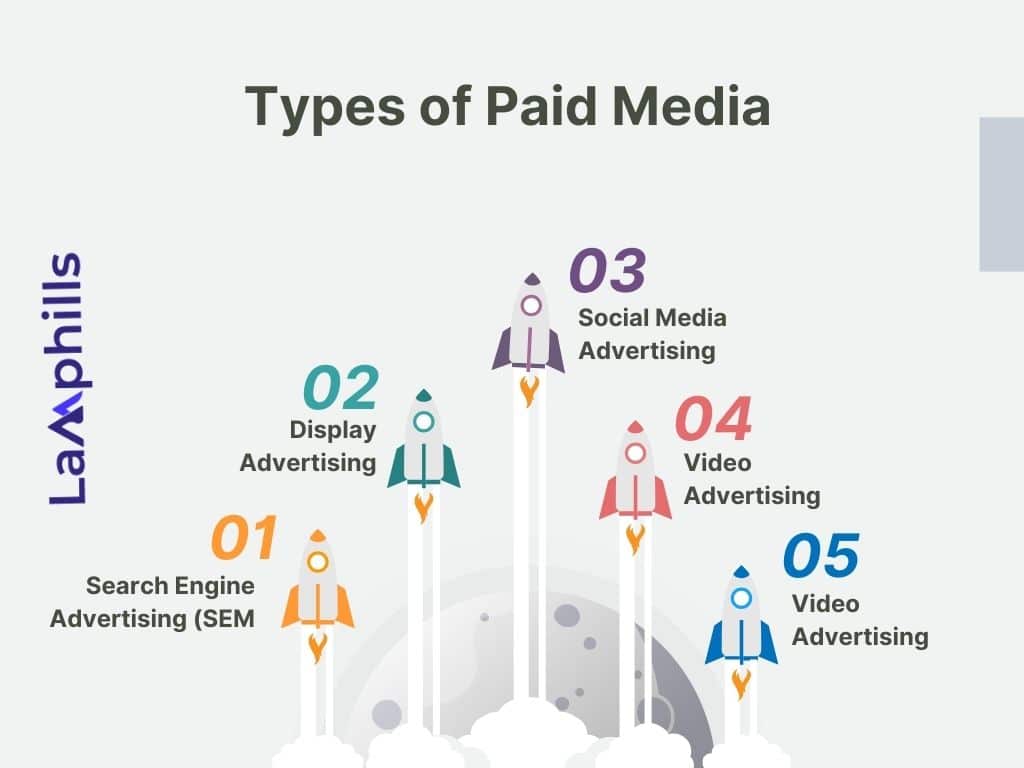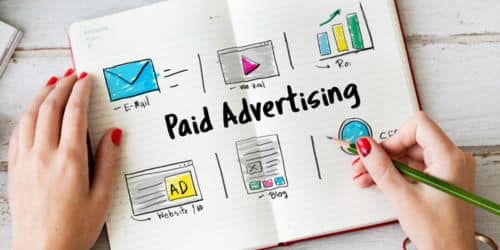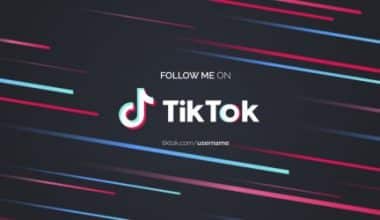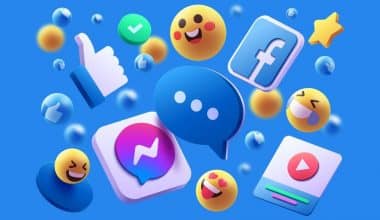For anyone who wants to increase sales or brand visibility, paid media is one of the things to maximize. Over the years, I’ve witnessed how a well-executed paid media strategy can propel a brand from obscurity to dominance almost overnight. There’s a need to master paid media management, especially when every online click can catapult a brand to success or drown it.
Think about this: Businesses that effectively leverage Google Ads see an average return of $8 for every $1 spent, according to WordStream. Yet, the real power of paid media lies in its precision. As eMarketer reports, 63% of companies are increasing their paid media budgets to stay ahead of the competition, recognizing that targeted ads reach the right audience at the right time.
In this guide, I’ll share the paid media strategies I’ve honed through experience—strategies that drive measurable results and keep your brand at the forefront of consumers’ minds in an increasingly crowded digital landscape. Ready to elevate your paid media game?
Key Points
- Paid media management involves the strategic planning, execution, and optimization of paid advertising campaigns across digital platforms.
- It is a key component of digital marketing, where businesses pay to place their ads on platforms like Google, Facebook, Instagram, LinkedIn, and others to reach their target audience.
- Businesses that effectively leverage Google Ads see an average return of $8 for every $1 spent, according to WordStream.
- eMarketer reports that 63% of companies are increasing their paid media budgets to stay ahead of the competition, recognizing that targeted ads reach the right audience at the right time.
- The key aspects of paid media management include budget allocation, platform selection, ad creation and testing, performance optimization, and cross-platform integration.
Understanding Paid Media Management
Over the years, paid media has offered businesses a direct route to reach their target audience and achieve measurable results. Unlike owned or earned media, paid media involves paying to place your content in front of a specific audience. This can be through search engine ads, social media advertising, or display networks. It helps brands achieve visibility, drive traffic, and increase conversions.
Unlike organic efforts, paid media allows immediate visibility and control over your brand’s messaging across various digital platforms. Although it requires a deep understanding of the platforms, audience behavior, and ongoing optimization, it generates substantial ROI.
What Is Paid Media Management?
Paid media management involves the strategic planning, execution, and optimization of paid advertising campaigns across digital platforms. It is a key component of digital marketing, where businesses pay to place their ads on platforms like Google, Facebook, Instagram, LinkedIn, and others to reach their target audience.
Key aspects of paid media management include budget allocation, platform selection, ad creation and testing, performance optimization, and cross-platform integration.
Benefits of Paid Media Management
The following are some of the benefits of paid media management:
#1. Precision Targeting
One of the most powerful aspects of paid media is the ability to target specific demographics with laser precision. When I run campaigns, I often leverage advanced targeting features to ensure that ads reach the most relevant audiences. For example, using Facebook’s robust targeting options, I’ve been able to segment audiences based on detailed demographics, interests, and behaviors. This level of precision is invaluable—eMarketer reports that 72% of marketers consider accurate targeting for campaign success. This isn’t just theory; I’ve seen campaigns with precise targeting outperform broad campaigns by significant margins, driving higher click-through rates and conversions.
#2. Immediate and Measurable ROI
Another major advantage of paid media is its ability to deliver immediate visibility and measurable results. Unlike organic efforts, where results can take time, paid media offers a faster route to achieving business goals. I’ve managed Google Ads campaigns where businesses earned $3 in revenue for every $1 spent. This immediate feedback loop allows for quick adjustments to improve performance, something I regularly do by analyzing metrics and tweaking campaigns in real-time.
#3. Flexibility and Budget Control
Flexibility in budget allocation is another strong point of paid media. Throughout my career, I’ve managed campaigns with varying budgets, from small businesses to large enterprises. The ability to scale campaigns up or down, based on performance and budget availability, ensures that marketing spend is always optimized. This flexibility helps in adapting strategies to different market conditions. It also ensures that downturn campaigns remain effective and cost-efficient.
Types of Paid Media

The following are some of the types of paid media:
#1. Search Engine Advertising (SEM)
Search engine marketing (SEM) is a key component of many paid media strategies I’ve managed. Businesses can capture high-intent traffic—those actively searching for products or services with relevant keywords. Google’s Economic Impact Report shows that brands record $8 in profit for every $1 spent on Google Ads. My experience aligns with this, as well-executed SEM campaigns have consistently driven strong results, especially with ongoing keyword optimization and A/B testing of ad copy.
#2. Display Advertising
Display ads are another powerful tool in the paid media arsenal. These ads are designed to create brand awareness and can be highly effective for retargeting. I’ve found that combining display ads with retargeting strategies significantly boosts conversion rates—HubSpot highlights that retargeted visitors are 70% more likely to convert.
#3. Social Media Advertising
Social media platforms like Facebook, Instagram, LinkedIn, and TikTok have revolutionized how we approach paid media. In my experience, social media ads offer unparalleled opportunities to engage with highly segmented audiences. The key is to tailor content to the platform and audience. Statista states social media ad revenue will hit $268 billion by 2025. Some of the campaigns I’ve run are a testament to the effectiveness of social media in driving brand engagement and sales.
#4. Video Advertising
Video content has become increasingly central to digital marketing strategies. I focus on short-form and engaging content that captures attention when managing video ad campaigns. Wyzowl’s 2023 report indicates that 87% of marketers see positive ROI from video ads—a figure I can confirm from my campaigns on platforms like YouTube and Instagram Reels, where video ads have driven high engagement rates and conversions.
#5. Native Advertising and Sponsored Content
Native advertising, where ads blend seamlessly with the surrounding content, is another strategy I frequently employ. This is less intrusive to users. It also results in higher engagement. According to the Content Marketing Institute, native ads can lead to an 18% higher lift in purchase intent than traditional display ads. I’ve found that combining native ads with sponsored content, such as articles or influencer partnerships, can significantly boost brand credibility and trust.
Paid Media Management Best Strategies
The following are some of the strategies I adopt to maximize my paid media efforts:
#1. Cross-Platform Campaign Integration
Running campaigns across multiple platforms allows you to reach a broader audience and ensures consistent messaging. In my experience, the most successful paid media campaigns adopt an omnichannel approach. For instance, I’ve run campaigns where synchronized messaging across Google Ads, Facebook, and YouTube resulted in a consistent brand experience and improved overall campaign performance.
You can develop an integrated approach where each platform supports the others. For example, I use Facebook ads to drive awareness and Google Ads to capture intent. Lastly, ensure consistent branding and messaging across all platforms to create a unified customer journey.
Lamphills’ Cross-Platform Campaign Integration Checklist
This Lamphills’ cross-platform campaign integration checklist ensures cohesive and consistent messaging across all advertising platforms to enhance brand recognition and engagement:
Download Lamphills’ Cross-Platform Campaign Integration Checklist
#2. Advanced Bid Management
Consider bid management to maximize your ad spend, because overbidding can exhaust your budget. On the other hand, underbidding may lead to lost opportunities. I implement automated bidding strategies offered by platforms like Google Ads (e.g., Target CPA, Target ROAS) to optimize bids based on real-time data. You can combine this with manual adjustments for high-priority campaigns to avoid overspending.
#3. Comprehensive Audience Research and Segmentation
The success of a paid media campaign heavily relies on understanding your audience. Segmenting your audience based on demographics, interests, behavior, and purchase intent allows for highly targeted ads, which increases relevance and conversion rates.
I use tools like Google Analytics, Facebook Audience Insights, and CRM data to build detailed audience profiles. Besides, I create custom and lookalike audiences to target potential customers similar to my existing customer base.
#4. Data-Driven Targeting and Optimization
Over the years, I’ve leveraged first-party data and AI-driven insights to fine-tune audience segments. According to McKinsey, companies using advanced data analytics are 23 times more likely to outperform competitors in customer acquisition. This demands continuous analysis of campaign performance and making data-driven adjustments to improve results.
#5. Conversion Rate Optimization (CRO)
Driving traffic to your site is only half the battle. Ensuring that traffic converts is the next step in maximizing ROI. You can work on optimizing landing pages to match ad messaging and provide a seamless user experience. Use A/B testing to determine the most effective page elements (headlines, CTAs, and forms). Ensure fast load times and mobile friendliness, as these are critical factors in retaining visitors and converting them into customers.
#6. Budget Flexibility and Real-Time Adjustments
Market conditions and audience behavior can change rapidly. Your budget allocation should be flexible to respond to these changes. I monitor the performance of my campaigns in real-time and reallocate the budget to the best-performing channels or ads. You can use dynamic budget allocation strategies, which automatically adjust spending based on performance metrics.
#7. Granular Tracking and Analytics
Without accurate tracking, you cannot measure the success of your campaigns or make data-driven decisions to improve them. I set up comprehensive tracking using tools like Google Tag Manager and UTM parameters. Track key metrics such as Cost Per Click (CPC), Click-Through Rate (CTR), conversion rate, and Return on Ad Spend (ROAS). Regularly analyze these metrics to understand performance and adjust your campaigns accordingly.
#8. Use Retargeting and Remarketing
Retargeting allows you to reconnect with users who already interacted with your brand. This makes conversion easier. To retarget campaigns, use platforms like Google Ads and Facebook ads. You can also create segmented retargeting lists (e.g., cart abandoners, page viewers) and serve personalized ads that address their needs or concerns.
#9. Focus on Lifetime Value (LTV)
Focusing solely on immediate conversions can limit the long-term success of your campaigns. Considering the lifetime value of a customer allows for a more strategic approach to ad spend. You can use customer segmentation to identify high LTV customers and allocate more budget towards acquiring similar profiles. Lastly, adjust your messaging and offers to reflect the long-term benefits of your product or service. This encourages repeat purchases and customer loyalty.
#10. Creative Testing and Optimization
The creative elements of your ads—such as images, videos, headlines, and copy—play a significant role in capturing attention and driving action.
Regularly conduct A/B testing to compare ad creatives and identify which elements resonate most with your audience. Use the insights to optimize your ads continuously. Rotate creatives frequently to avoid ad fatigue, where users become too familiar with your ads and start ignoring them.
A/B testing is a non-negotiable part of my paid media strategy. I’ve seen firsthand how ad testing creatives, messaging, and CTAs can lead to significant performance improvements. For example, in one campaign, simply changing the CTA from “Buy Now” to “Learn More” increased conversion rates by 25%. VWO’s study supports this, showing that A/B testing can boost conversion rates by nearly 50%.
Emerging Trends in Paid Media Management
The following are some of the emerging trends in paid media:
#1. Embracing Video and Emerging Platforms
The dominance of video content is undeniable. Platforms like TikTok and Instagram Reels are driving engagement like never before. Cisco predicts that by 2024, 82% of all internet traffic will be video. That’s why Facebook has added reels to its platform. I’ve embraced this trend by creating engaging, platform-specific video content that resonates with audiences and drives action in most of my campaigns.
#2. Preparing for Voice and Visual Search
With the rise of voice and visual search, optimizing these formats has become increasingly important. ComScore estimates that by 2024, half of all searches will be voice-activated. I’ve started incorporating conversational keywords and optimizing visual content to ensure my paid media campaigns are ready for this shift.
#3. Navigating the Post-Cookie Era
The shift away from third-party cookies is a significant challenge for paid media managers. In response, I’ve focused on leveraging first-party data and exploring alternatives like Google’s Privacy Sandbox. Forrester reports that 41% of marketers believe this shift will lead to more effective, privacy-centric advertising. It will also prioritize consumer trust while delivering targeted, relevant ads.
Challenges in Paid Media Management
The following are some of the challenges you might encounter with paid media:
#1. Effective Budget Management
Paid media budgets must be managed effectively to get an optimal result with tight margins. Deloitte reports that businesses using advanced budgeting tools see a 20% increase in marketing efficiency, a result I’ve consistently achieved by closely monitoring and optimizing spend. I rely on tools like Google Analytics and Facebook Ads Manager to track performance and make data-driven adjustments.
#2. Combating Ad Fatigue
Ad fatigue is a common challenge, particularly in long-running campaigns. To combat this, I regularly rotate ad creatives and employ frequency capping to prevent overexposure. This not only keeps the audience engaged but also improves overall campaign performance.
What Does a Paid Media Person Do?
A paid media specialist or manager is responsible for managing a company’s paid advertising campaigns across various digital platforms. Their primary duties include strategy development, campaign management, audience targeting, performance analysis, and reporting.
How to Get Paid Media Experience?
Gaining experience in paid media can be achieved through various methods, including:
- Education and Training
- Internships and Entry-Level Positions
- Freelancing
- Practice with personal projects
- Networking
Is Paid Media Worth It?
Sure, paid media is worth it. It yields immediate results unlike organic strategies; scales up or down based on performance and budget; and allows for precise targeting. It also provides clear insights into what’s working and what isn’t.
Paid Media Management Agency
A paid media management agency isn’t just about running ads; it’s about crafting a comprehensive strategy that aligns with your business goals. My experience has shown that when businesses attempt to handle paid media in-house, they often overlook the nuances that make the difference between a campaign that just spends money and one that drives significant returns.
Paid Media Management Agency: Key Services and Strategies
The following are some of the key services and strategies of paid media management agencies:
- Strategic campaign planning
- Creative ad development
- Advanced audience targeting
- Bid management and budget optimization
- Continuous monitoring and optimization
- Comprehensive reporting
Why Partner with a Paid Media Management Agency?
Businesses partner with paid media agencies for several reasons, but chief among them is the ability to tap into expert knowledge and resources they lack. Others include access to expertise, time and resource efficiency, and scalability.
Examples of Industry Leaders
Agencies like Disruptive Advertising, KlientBoost, and Thrive Internet Marketing Agency are at the forefront of the industry, each bringing a unique approach to paid media management. For example, KlientBoost is renowned for its creative, high-ROI campaigns. Meanwhile, Thrive integrates paid media with other digital marketing efforts, offering a holistic approach that amplifies results across the board.
Conclusion
Although we can’t compare the impact of earned media with paid ones, paid media is still dynamic and relevant. Several successful brands have adopted it as part of their digital marketing strategies. You can achieve significant results by leveraging the right platforms, targeting the right audiences, and continuously optimizing your approach. Which of these paid media strategies will you adopt? Let me know in the comment section.
Related Articles
- Earned Media Strategy: Proven Tips for Implementation 2024
- Examples of Earned Media To Inspire Your Marketing Campaign
- 11 Best AI Content Creation Tools to Use in 2024 (Free + Paid)






